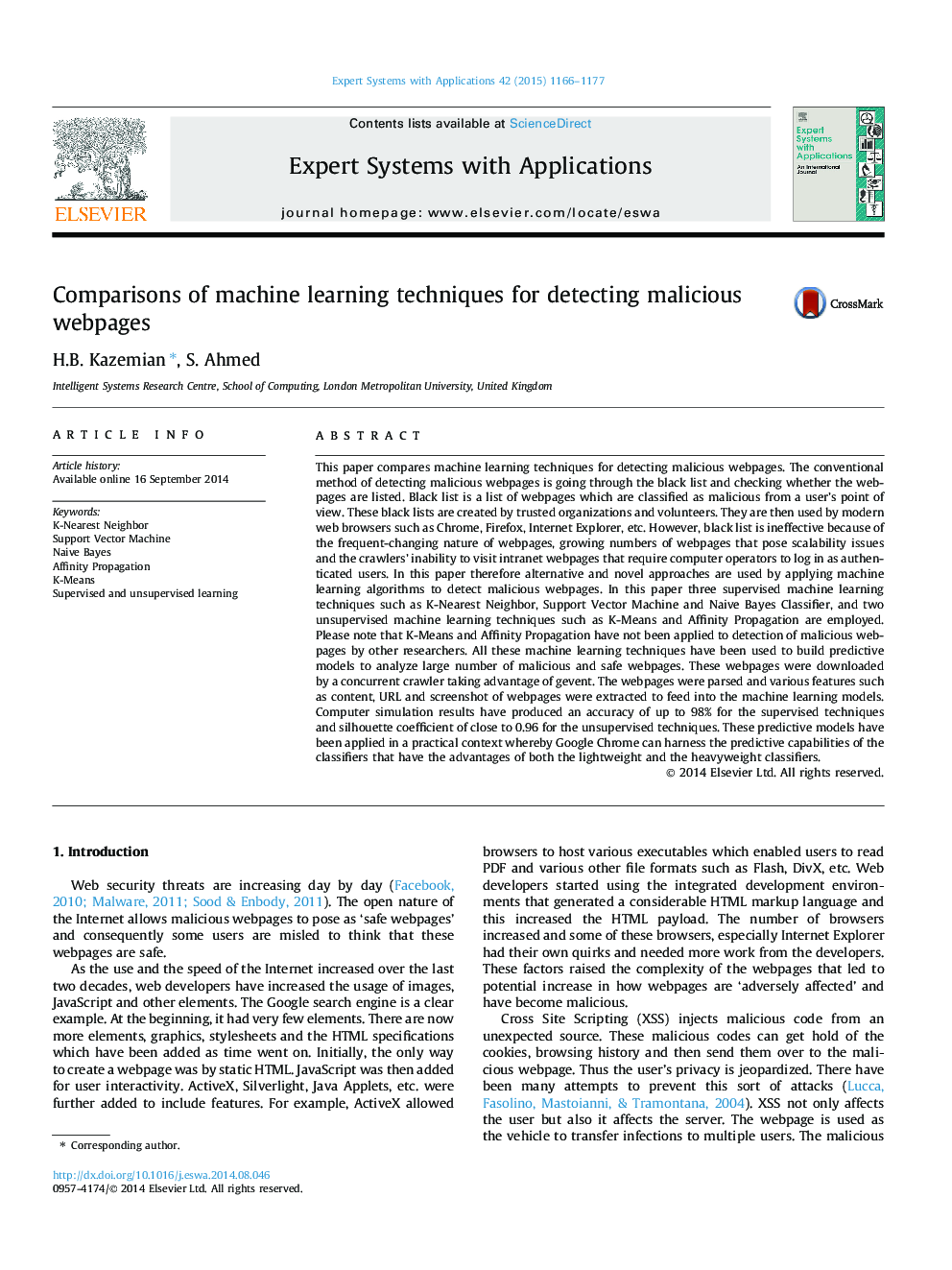| کد مقاله | کد نشریه | سال انتشار | مقاله انگلیسی | نسخه تمام متن |
|---|---|---|---|---|
| 10321897 | 660776 | 2015 | 12 صفحه PDF | دانلود رایگان |
عنوان انگلیسی مقاله ISI
Comparisons of machine learning techniques for detecting malicious webpages
ترجمه فارسی عنوان
مقایسه تکنیک های یادگیری ماشین برای تشخیص صفحات وب مضر
دانلود مقاله + سفارش ترجمه
دانلود مقاله ISI انگلیسی
رایگان برای ایرانیان
کلمات کلیدی
موضوعات مرتبط
مهندسی و علوم پایه
مهندسی کامپیوتر
هوش مصنوعی
چکیده انگلیسی
This paper compares machine learning techniques for detecting malicious webpages. The conventional method of detecting malicious webpages is going through the black list and checking whether the webpages are listed. Black list is a list of webpages which are classified as malicious from a user's point of view. These black lists are created by trusted organizations and volunteers. They are then used by modern web browsers such as Chrome, Firefox, Internet Explorer, etc. However, black list is ineffective because of the frequent-changing nature of webpages, growing numbers of webpages that pose scalability issues and the crawlers' inability to visit intranet webpages that require computer operators to log in as authenticated users. In this paper therefore alternative and novel approaches are used by applying machine learning algorithms to detect malicious webpages. In this paper three supervised machine learning techniques such as K-Nearest Neighbor, Support Vector Machine and Naive Bayes Classifier, and two unsupervised machine learning techniques such as K-Means and Affinity Propagation are employed. Please note that K-Means and Affinity Propagation have not been applied to detection of malicious webpages by other researchers. All these machine learning techniques have been used to build predictive models to analyze large number of malicious and safe webpages. These webpages were downloaded by a concurrent crawler taking advantage of gevent. The webpages were parsed and various features such as content, URL and screenshot of webpages were extracted to feed into the machine learning models. Computer simulation results have produced an accuracy of up to 98% for the supervised techniques and silhouette coefficient of close to 0.96 for the unsupervised techniques. These predictive models have been applied in a practical context whereby Google Chrome can harness the predictive capabilities of the classifiers that have the advantages of both the lightweight and the heavyweight classifiers.
ناشر
Database: Elsevier - ScienceDirect (ساینس دایرکت)
Journal: Expert Systems with Applications - Volume 42, Issue 3, 15 February 2015, Pages 1166-1177
Journal: Expert Systems with Applications - Volume 42, Issue 3, 15 February 2015, Pages 1166-1177
نویسندگان
H.B. Kazemian, S. Ahmed,
